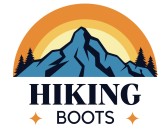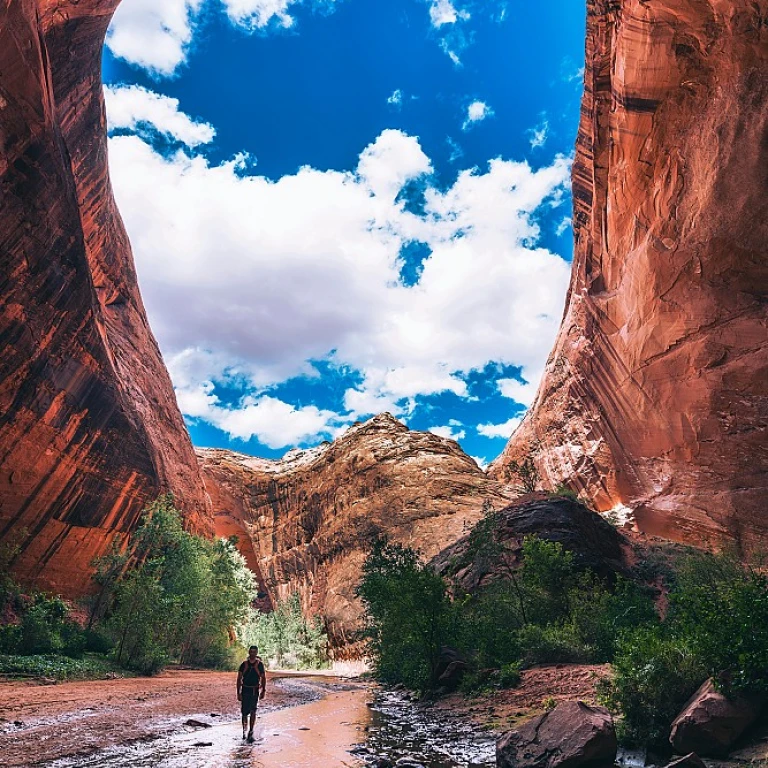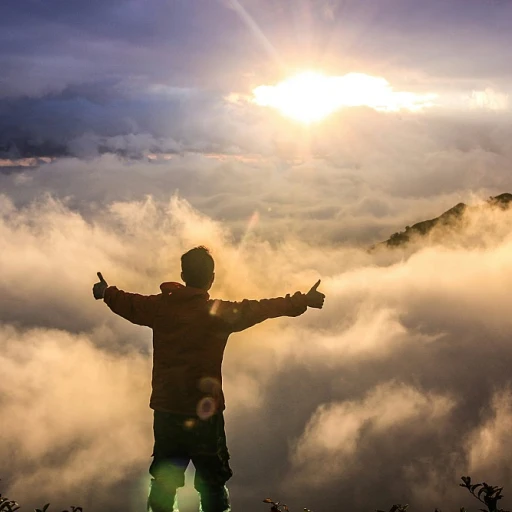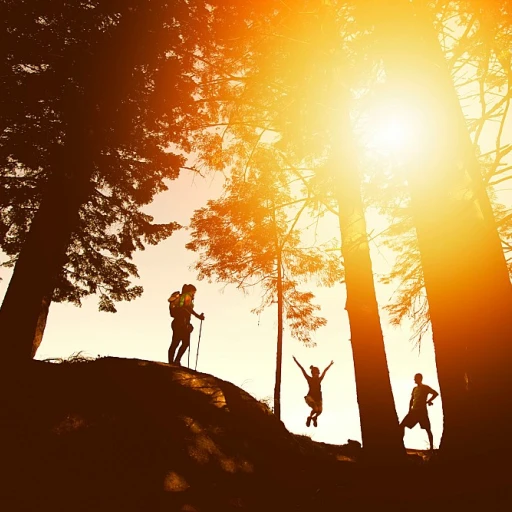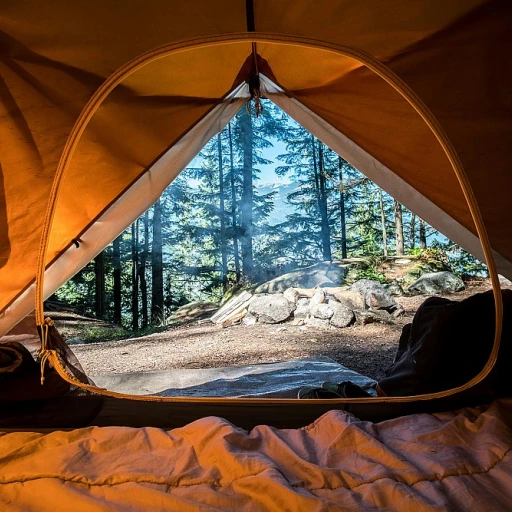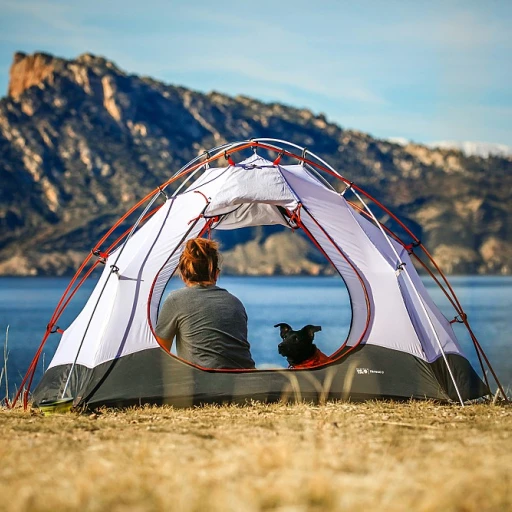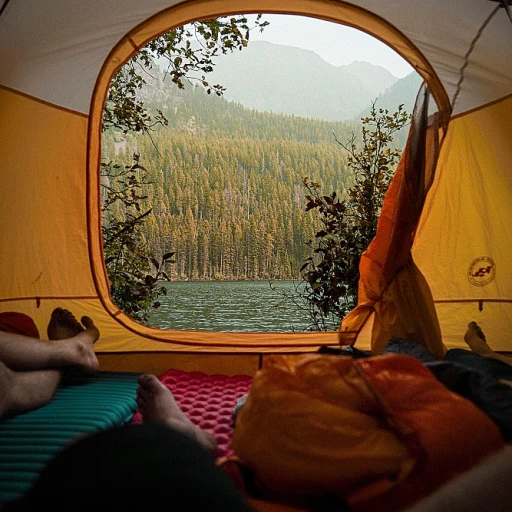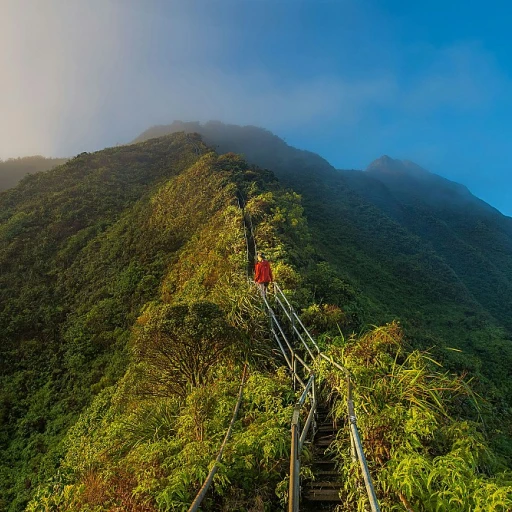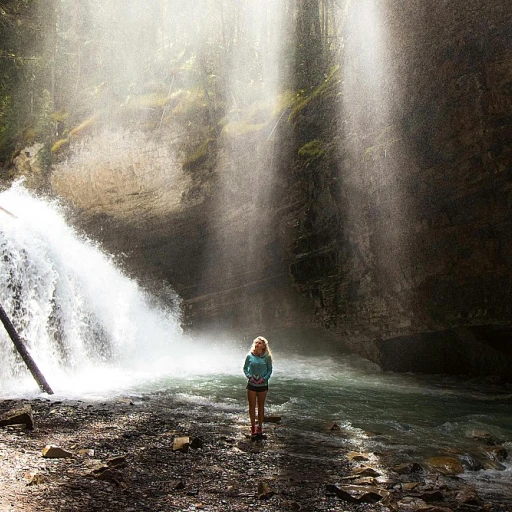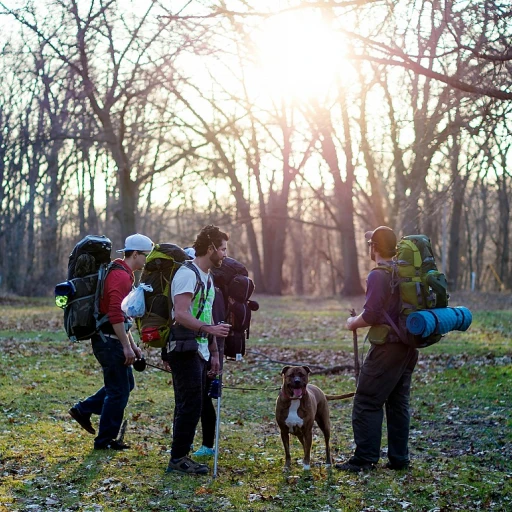Understanding Sedona's unique climate
Sedona's climate in a nutshell
Sedona, Arizona, is celebrated for its scenic red rock formations and pleasant hiking trails. However, the weather can be quite temperamental and varies significantly across different times of the year. Located at an elevation of around 4,350 feet above sea level, Sedona boasts a high-desert climate that’s markedly different from other regions in Arizona.
The city experiences a semi-arid climate, meaning it has hot summers and cool winters. In summertime, daytime temperatures can soar to over 100°F, whereas winters see milder temperatures that can dip below freezing at night. Rainfall is relatively low throughout the year, averaging about 19.0 inches annually according to the National Weather Service data.
Humidity is generally low, offering dry conditions that help manage the heat. Still, hikers should be cautious of quick-changing weather patterns. For instance, a sunny morning can swiftly turn into a cloudy or even rainy afternoon. This unpredictability is a crucial factor to consider when planning a hiking trip in Sedona.
One notable phenomenon in Sedona is its monsoon season, occurring primarily in July and August. During monsoon, the area receives short but intense bursts of rain, often accompanied by lightning and thunder. These storms can lead to flash floods, making certain trails and areas hazardous. The SEO anchor advises hikers to always check weather updates and be prepared for sudden changes.
Wind can be another obstacle. Gusts can exceed 20 mph, especially in the spring. These high winds can make hiking more strenuous and can lead to quick temperature drops within the canyons, making it imperative to carry appropriate gear.
Seasonal weather trends in Sedona
The magic of changing seasons
Sedona's weather can be quite the shape-shifter. Every season has its own charm, quirks, and challenges for hikers. Whether you're planning to visit during the bustling spring or the calm winter months, knowing what to expect can make all the difference.
Spring: blooming trails and mild temperatures
Spring is the golden time for hiking enthusiasts. From March to May, temperatures in Sedona range from lows of 40°F to highs of 80°F. RealFeel temperatures can slightly vary, especially in shaded areas. The chances of rain are relatively low during this period, making it a favorite among many hikers. Popular trails like the Oak Creek Canyon become magical with blooming wildflowers. Rainbow hues of evening skies and the waxing crescent moon can enhance your hiking experience.
Summer: hot days and potential storms
June through August is the hottest time in Sedona, with temperatures often soaring beyond 90°F. Humidity is usually low, but the high RealFeel shade can make midday hikes challenging. Early sunrises and late sunsets provide ample daylight for those who prefer dawn or dusk treks. However, be cautious of sudden thunderstorms and high winds that can occur. Always check weather forecasts and carry sufficient water.
Fall: comfortable hikes amidst vibrant colors
Fall (September to November) brings a cool relief with temperatures balancing between 55°F and 80°F. This is another ideal period for hiking as the sun is vibrant yet forgiving. One can witness beautiful foliage around oak creek and other trails. The, sunsets during fall are exceptionally breathtaking, often casting a golden glow over Sedona's red rocks.
Winter: serene and chilly explorations
From December to February, Sedona's temperatures range from the 30s to mid-60s°F. While sunny days are common, clouds and occasional rain aren't rare. Higher elevations, such as those around Flagstaff, may see snow, adding a picturesque element to your hiking. Layering is key during this season to stay warm and adaptable.
Daily weather patterns and their impact on hiking
Impact of Sedona's daily weather patterns on your hiking adventure
Planning a hike in Sedona? Don't just pack your hiking boots and hope for a nice day! Sedona's weather can shift quickly. Here are the key patterns you need to know for an enjoyable hike.Morning magic
Mornings in Sedona are usually calm and cool. With temperatures often ranging from 50-70°F (10-21°C) depending on the season, this is the perfect time to start your hike. You’ll enjoy clearer skies and a gentle sunrise, especially during spring and autumn. Not to mention, the humidity remains relatively low, making it ideal for those early rugged trails. By the way, check our ultimate guide on things to do in Sedona for more ideas on how to spend your mornings!Afternoon clouds and heat
As noon approaches, temperatures can soar to highs of 80-100°F (27-38°C) in the summer. It’s also when the clouds start to gather, which can bring a bit of respite from the blazing sun. In fact, during the summer months, a 20-30% chance of rain is typical, especially during the monsoon season. The wind speeds also increase, averaging 5-15 mph, which can affect your comfort and safety on exposed trails.Evening chill and winds
Come late afternoon to early evening, temperatures begin to drop, but the winds can pick up. Wind speeds around 10-20 mph from the southwest are not uncommon. This is when sunset paints the sky in mesmerizing hues, a breathtaking view but also a reminder to wrap up your hikes. The temperature drop can be significant, especially when the skies are clear, so it’s wise to carry layers.Considering seasonal weather patterns
For more insights on how different seasons affect Sedona weather, check out our weather sedona guide. You'll find precise analyses on what to expect throughout the year.Stay updated with real-time tools
Don't forget to use real-time weather resources and tools before hitting the trails. Platforms like AccuWeather provide 'RealFeel' temperatures, wind speeds, and humidity levels that can help in planning. Additionally, locals often share updates and tips on online forums. Keeping an eye on these can help you avoid surprises.Prepare for quick weather changes
Sedona weather can surprise even the most experienced hikers. Unexpected high winds, sudden rain showers, or extended sunny highs can occur. Make sure to bring versatile gear and be ready to adjust your plans. Remember, the goal is to enjoy your hike while staying safe.Expert insights on Sedona weather
Local experts shedding light on sedona's unpredictable weather
When it comes to planning your outdoor adventures in Sedona, it's crucial to heed the advice of those who know this unpredictable climate best. We turned to seasoned hikers, meteorologists, and local trail guides to get some expert insights on what to expect from Sedona weather.
Bill Clevenger, a local meteorologist with over 20 years of experience, states, "Sedona's weather can change rapidly. You might start your hike under clear skies and end up seeking shelter from a sudden downpour." This volatility is something first-time hikers often underestimate.
Impact of weather on hiking experiences
Veteran hiker Jessica Maitland highlighted the reality of high winds in Sedona. "I remember a hike up Oak Creek Canyon when the winds reached 20 mph. It felt like nature was testing my resolve. High winds can drastically affect your hike, from making paths slippery to blowing dust into your eyes." Maitland's experience underscores the need to prepare thoroughly.
Local guide Mark Williams, who has been leading tours in West Sedona for over a decade, emphasized the importance of humidity visibility levels. "High humidity, especially in the summer months, can make a 70°F day feel much warmer due to the high RealFeel index. Always pack more water than you think you'll need," he advises.
Informative forums and community wisdom
Online forums are treasure troves of firsthand reports and helpful votes on weather-related challenges. Check out Weather Underground for real-time data points and anecdotal insights, often intertwined with personal tales of triumph and cautionary advice. Users frequently share their sunrise and sunset timings experiences, adding value to personal planning.
For those who prefer video content, Accuweather Connect provides useful top video stories that can help visual learners prepare for their hikes. Watching these can sometimes offer a clearer picture of the conditions to expect than static reports.
Managing changing conditions
It's not just about the numbers. Personal anecdotes frequently highlight the sheer unpredictability of Sedona's weather. Take Emilia Gonzales's story, for example. She started a sunny day hike toward Bell Rock, only to be drenched by an unexpected rain shower halfway through. Her advice? "Invest in good water-resistant gear and always carry a light poncho."
For real-time updates, hikers recommend keeping multiple weather apps on hand. The National Weather Service and Weather Channel apps are popular choices for their accuracy and user-friendly interfaces.
In conclusion, while the weather in Sedona can be a mixed bag, it’s completely navigable with the right preparation and access to real-time data. The unique climate, though unpredictable, offers both challenge and charm to those willing to brave its quirks. So lace up those hiking boots, check your apps, and venture out into the breathtaking scenery that Sedona, Arizona has to offer.
Real-time weather resources and tools
Real-time Sedona weather resources at your fingertips
When you're planning a hiking trip to Sedona, staying informed about the current weather is key. Weather conditions can shift rapidly in this area, so having up-to-date information is critical for a safe and enjoyable adventure. Below are some reliable resources and tools you can use to monitor Sedona's weather in real-time.AccuWeather: Detailed daily outlooks
AccuWeather is a trusted source for accurate weather forecasts and real-time updates. Through their detailed daily outlooks, you can gauge the realfeel, humidity, wind speed (mph), and UV index. If you're keen on understanding the nuanced shifts in Sedona's weather, their interface even offers sunrise and sunset times, phases of the moon, and other essential details, making it a comprehensive tool for hikers.National Weather Service: Official updates
Another go-to resource is the National Weather Service (NWS). The NWS provides official weather warnings and updates, which are essential if you're facing adverse conditions like high winds or sudden rain showers. With their radar capabilities, you can track storms and other weather patterns in real-time, ensuring you're always prepared.Popular hiking forums: Shared experiences
Hiking forums can also be invaluable for real-time updates. Websites like TripAdvisor and Reddit often feature posts from fellow hikers who share their recent experiences with Sedona's weather. In fact, one could argue that posts and helpful votes from these forums offer boots-on-the-ground insights that are sometimes more immediate than formal weather reports.Mobile apps: Convenience in your pocket
For those who like to have weather updates on the go, mobile apps such as the Weather Channel, Clima, and Windy are highly recommended. These apps use GPS technology to provide hyper-local weather updates. Whether you're scouting clear skies or preparing for partly cloudy conditions, having weather updates at your fingertips can be a game-changer.Case in point: High winds and unexpected rain
A few years ago, a group of hikers ignored weather updates and faced unforeseen weather challenges that could've been avoided. They started their hike during a seemingly calm morning only to be caught in a fast-moving rainstorm later in the day. This led to slippery trails and challenging conditions, emphasizing the importance of always having real-time weather checks to adjust your plans accordingly.Essential tools for safety
When hiking in an area as diverse as Sedona, these tools are not just conveniences; they are essential for safety. Being aware of real-time weather conditions helps you avoid potentially dangerous situations and enhances your overall hiking experience. Equip yourself with the right tools and stay ahead of Sedona's unique and ever-changing weather patterns.Case studies: Weather challenges faced by hikers
Dealing with unexpected weather challenges
Any seasoned hiker will tell you that Sedona's weather can be full of surprises. From sudden high winds to unexpected rain showers, being ready for anything is key. According to Accuweather, wind speeds in Sedona can sometimes reach up to 20 mph on a seemingly clear day. This can make navigating narrow trails that much more thrilling or perilous, depending on your perspective.
Personal tales: When weather turns the tables
A hiker named John Reyes shared his experience on a popular hiking forum. He described a day that began with a sunny 70°F (21°C) forecast, only to be caught in a surprise downpour halfway through his hike in Oak Creek Canyon. His tale is a vivid reminder that Sedona's weather often teaches everyone a valuable lesson in humility and preparedness.
Expert opinions on Sedona's weather variations
Weather expert Dr. Sarah Thompson, associate professor at Northern Arizona University, remarked, "Sedona's microclimates can trick even the most experienced hikers. Always check humidity and visibility conditions." Dr. Thompson emphasized the importance of real-time updates from trusted sources like the National Weather Service and Accuweather.
Tough lessons from the trail
Consider the case of a hiking group that experienced harsh lessons at Red Rock State Park. High winds coupled with rapidly falling temperatures created treacherous conditions. Despite having weather forecasts for a 'sunny day', these sudden shifts left them scrambling for cover. This case underscores the unpredictable nature of Sedona's weather and the importance of having contingency plans.
Weather's impact on trail safety and enjoyment
Fluctuations in Sedona's weather can impact not just safety but also the overall enjoyment of a hike. As reported by the Sedona Az Weather page, hikers often seek out peaks like Cathedral Rock for their stunning views, best experienced during clear, stable weather. Conversely, trails can become hazardous when the weather turns, turning adventure into a cautious trek.
Preparing for Sedona's weather: Gear and tips
Gear essentials for Sedona’s unpredictable weather
If you're embarking on a hike in Sedona, Az, you need to be prepared for a wide range of weather scenarios. The gear you pack can make or break your adventure experience. For instance, Sedona's sun is no joke, with average high temperatures in summer reaching 97°F (36°C). Sunscreen, sunglasses, and a wide-brimmed hat are non-negotiables.
Even when the forecast predicts sunny skies, the wind can surprise you. Fact: Wind speeds can reach up to 15 mph, especially in exposed areas like the red rock formations. A lightweight, wind-resistant jacket can save you from chilly gusts.
Hydration and cooling strategies
Proper hydration is crucial when hiking under Sedona's sun. Dehydration can quickly elevate into a serious situation. Carry at least 2-3 liters of water per day, and consider investing in a hydration pack. According to experts, maintaining a 'realfeel' of comfort involves not just staying hydrated but also monitoring your body's exposure to direct sunlight.
Remember, Sedona’s temperature drops significantly after sunset. Nighttime lows can dip to around 50°F (10°C) even in summer. Layering your clothing ensures you stay warm once the sun goes down. A lightweight sleeping bag or blanket can also make your overnight stay more comfortable.
Weather-specific hiking gear
When the forecast calls for rain, which does happen occasionally, you’ll need rain gear. Waterproof boots are a must to navigate slick, muddy trails safely. Did you know that Sedona's Oak Creek can flood rapidly during heavy rain? Always check the flood risk and avoid low-lying areas during and after rain.
High winds can also be a challenge. Wind-resistant trekking poles can provide stability and help you maintain balance on exposed trails. David Sweanor, a frequent Sedona hiker, shares his experience: “High winds once caught me off guard at Cathedral Rock. My trekking poles were vital in preventing falls on those narrow paths.”
Real-world examples and experiences
Take a cue from experienced hikers. Forum posts from a hiking group revealed that many Sedona hikers carry a multi-tool to deal with unexpected gear issues. One user recounted how her hydration pack’s hose froze during an early spring hike. Having a multi-tool allowed her to quickly detach and replace the frozen segment.
Humidity in Sedona can be deceptive. On a seemingly clear day, the visibility might be reduced to just a few miles because of dust or haze. Carrying a bandana can help you cover your face in dusty conditions, ensuring your hike remains enjoyable.
Always keep an eye on real-time weather updates. Sites like Accuweather provide timely alerts and detailed forecasts that can help you adjust your plans. For additional insights on how to anticipate and adapt to Sedona’s weather, check out our detailed guide here.
Sedona weather FAQs
Frequently asked questions about Sedona weather
What is the best time of year to hike in Sedona?The best time to hike in Sedona is during the spring (March to May) and fall (September to November) months. During these periods, the weather is generally more mild and pleasant, with daytime temperatures typically ranging from the 60s to 80s (°F). This allows for comfortable hiking conditions without the extreme heat of summer or the cold spell during winter.
How does weather impact hiking conditions?Weather can greatly impact your hiking experience. For example, high summer temperatures can lead to heat exhaustion, especially during midday hikes. High winds and rain can also transform trails and make them more challenging and potentially dangerous. Tracking the daily weather patterns is essential for planning your hikes accordingly. Tools like Accuweather provide real-time conditions and forecasts (source: Accuweather).
Are there weather conditions that are prevalent in Sedona?Yes, Sedona is known for its sunny weather, with an average of 278 sunny days per year. However, it also experiences fluctuations in daytime and nighttime temperatures, especially in the desert climate. Daytime temperatures can get quite high in the summer, often reaching 100°F, while nighttime lows can drop significantly. Humidity is generally low, making the air feel cooler than the actual temperature (source: Current Results).
What gear should I pack for varying weather conditions?Preparing for Sedona's weather involves a mix of heat-proof gear and rain protection. Essentials include a wide-brimmed hat, UV protection clothing, and plenty of water for hydration. For colder months or high-altitude hikes, layers are crucial. A water-resistant jacket can be handy during the occasional rain showers, and don't forget a good pair of hiking boots to navigate the rocky terrains.
How reliable are weather forecasts for Sedona?Weather forecasting tools have become quite advanced, providing relatively accurate predictions for Sedona. However, it's wise to remain cautious, as mountainous areas can sometimes produce unpredictable weather variations. Using real-time updates from multiple sources like Forums, and integrating sensors in newer hiking gadgets can help hikers stay one step ahead of changing conditions (source: Equip Your Trip).
Any notable weather-related challenges faced by hikers in Sedona?There have been instances where sudden weather changes have caught hikers off guard. High winds can quickly deteriorate trail conditions and even lead to trail closures. Additionally, the dramatic temperature shifts between day and night can exacerbate risks like dehydration or hypothermia. Proper preparation and constant vigilance are thus key to a safe hiking adventure in Sedona.
